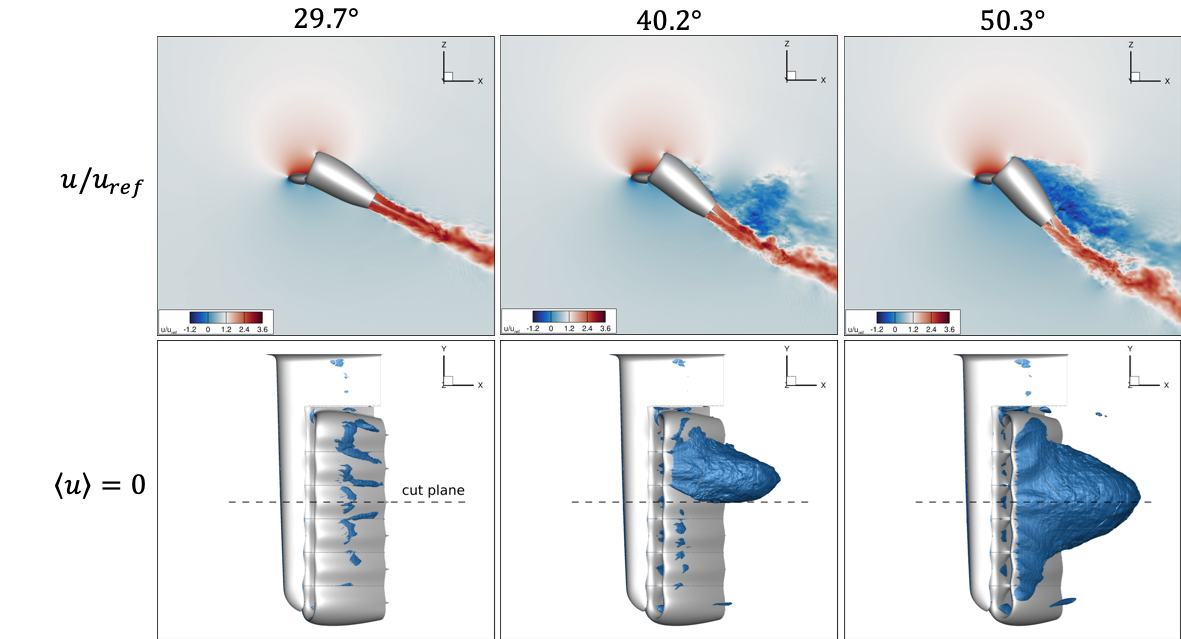V. Pasquariello, Y. Bunk, S. Eberhardt, P.-H. Huang, J. Matheis, M. Ugolotti, S. Hickel (2023)
AIAA Scitech paper 2023-2107. doi: 10.2514/6.2023-2107
The demand for fast, high-fidelity, scale-resolving computational fluid dynamics (CFD) simulations is continuously growing. Especially new emerging aviation technologies, such as electrical vertical take-off and landing aircraft (eVTOL), strongly rely on advanced numerical methods to retain development life-cycle costs and achieving design targets more quickly. This paper presents a cutting-edge large-eddy simulations (LES) solver developed to enable over-night turnaround times for full aircraft simulations on advanced graphics processing unit (GPU) architectures.
In this paper, we demonstrate that wall-modelled large-eddy simulations (WMLES) for practical aeronautical applications can be carried out within a few minutes or hours with very good accuracy in predicting design-critical properties, such as integrated forces. This is possible by leveraging modern GPU architectures such as the NVIDIA A100 together with carefully selected and tailored algorithms.
The present solver is based on a ghost-cell immersed boundary method (IBM) and coupled to a WMLES approach in a weakly-compressible finite-volume framework. A simple block-Cartesian adaptive grid with a fixed amount of cells per block has been selected, allowing for optimized algorithms with very high GPU occupancy. Special care was taken to equally balance the compute load of regular grid cells and the increased workload of the immersed boundary method among all partitions. This optimal load balancing is crucial for the overall performance and the scaling characteristics of the code, and has been achieved through a multi-objective graph partitioning in the present work.

The IBM-WMLES solver has been rigorously verified and validated against well-known academic test cases, such as the turbulent channel flow and the inclined turbulent boundary layer. Results show good accuracy of the present method on coarse meshes and robust performance independent of the cut cell configuration. WMLES results are presented for a realistic aircraft model in landing configuration, the so-called JAXA Standard Model (JSM). Sufficient accuracy with respect to the overall lift polar is achieved on a baseline mesh with turnaround times of less than an hour and using only 8 NVIDIA A100 GPUs, making WMLES of practical aeronautical applications accessible to the industry at an affordable cost. Finally, WMLES of an experimental 6-engine jet canard setup are presented, for which the lift coefficient at flap angles both in the attached and stalled flow regime agrees well with experimental measurements.

Lear more about current applications at https://lilium.com
